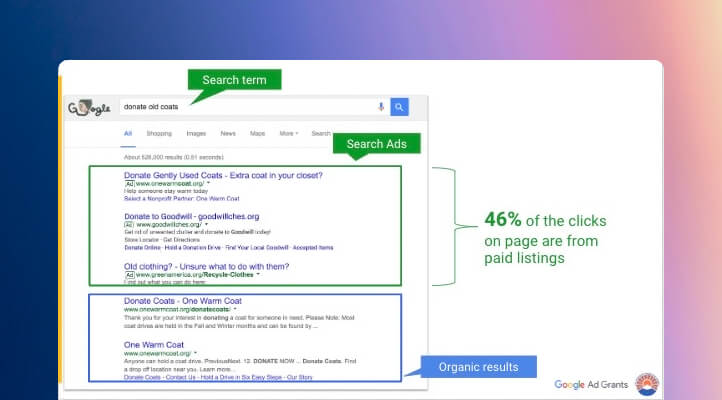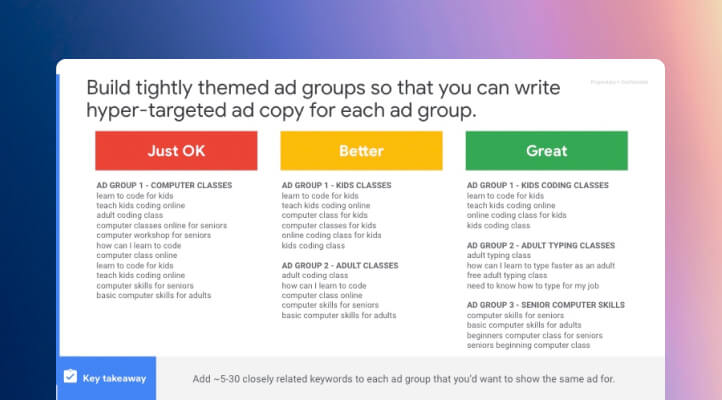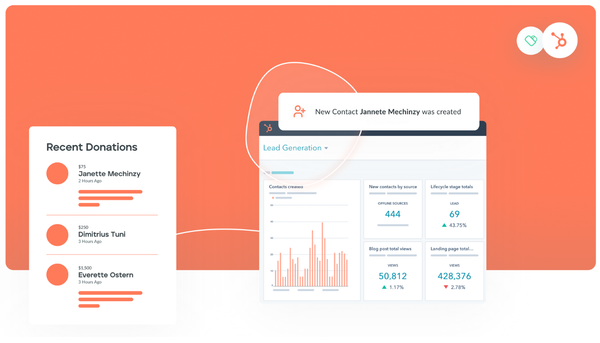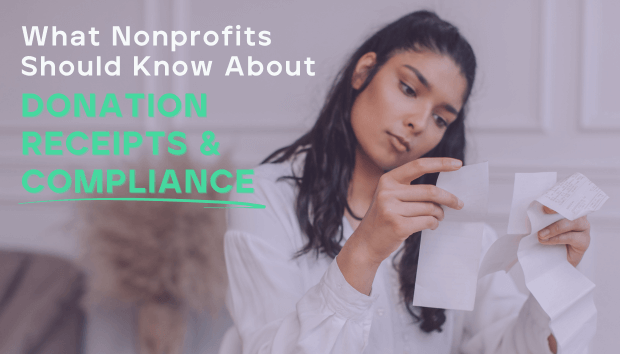How to Get Google Ad Grants for Your Nonprofit
Did you know Google grants up to $10,000 a month in ad spend for qualified nonprofits? Find out how to use Google Ad Grants for charities now.

What if you could reach thousands of new supporters online each day for free? With Google Ad Grants, this dream could become reality. That’s why we connected with our friends at Community Boost to give you a detailed breakdown of how it all works. Let’s get started.
With 5.6 billion searches on google every day, your nonprofit should take advantage of this critical online touchpoint. Google ads allow you to highly target potential donors with messaging at each phase of someone’s journey, launch ads quickly for timely events, and measure ads in real time for effectiveness.
Whether you’re a seasoned marketing professional or simply someone who uses the internet, you’re probably familiar with Google advertisements. When you submit a search on Google, the top results are often ads related to your search query. With Google Ad Grants, you can secure the resources needed to reach your ideal audience when they’re searching for a nonprofit like yours.

Read on to learn how you can take advantage of Google Ad Grants for charities.
What are Google Ad Grants?
Google Ad Grants give eligible nonprofits up to $10,000 per month to conduct paid advertising on the Google Ads platform. With the dual intention of helping nonprofits grow their impact and connecting individuals to worthy causes, Google Ad Grants are the brainchild of Google for Nonprofits (more on that later).
How do Google Ad Grants Work?
Nonprofits are able to apply for Google Ad Grants to use towards paid advertising that can raise awareness, recruit volunteers, and attract donors. First, your organization will need to qualify as a 501(c)(3) and pass the Google for Nonprofits eligibility check. Then, you can apply for a Google Ad Grant for your nonprofit.
While Google may allot your organization up to $10,000 a month in advertising spend, they won’t develop these ads for you. Your team will be responsible for writing, creating, and running ads. If your team is not yet using paid advertising, you’ll want to get acquainted with best practices. Luckily, Google provides free certification courses related to their major offerings so you can become familiar with how Google Ads works and how to leverage it to grow your nonprofit.
Can Nonprofits Get Google Ad Grants?
Absolutely! Google Ad Grants were quite literally made for nonprofits. Nonprofits are the only type of organizations that can receive Google Ad Grants. Most 501(c)(3) organizations are eligible to apply except for government entities, hospitals, or academic institutions. This helps ensure Google is allocating assistance to qualifying organizations that could best benefit from it.
If you aren’t familiar with Google for Nonprofits, you may be surprised how many nonprofits use Google Ad Grants. Since its founding in 2003, about 100,000 nonprofits have participated in this program.
Google Ad Grant Requirements
Before you put in your Google Ad Grant application, you’ll want to make sure you check all the boxes on Google’s must-have list. First and foremost, U.S. nonprofits need to be registered as a 501(c)(3). If you’re a new organization that has yet to complete this step, you can follow helpful articles like this one by Forbes to become a certified 501(c)(3). Keep in mind, this process takes between a few weeks and a few months. If your nonprofit is not based in the United States, you must follow the guidelines for being federally recognized as a nonprofit in your country.
Next, you’ll want to create a Google for Nonprofits account. Google for Nonprofits is a host of Google tools tailored for nonprofit organizations. This includes Google Workspace at a free or discounted rate, the YouTube Nonprofit Program, Google Earth and Maps, and last but certainly not least, Google Ad Grants. Not only will these tools help you manage your team and explore new avenues of growth, but they can also help you qualify for a Google Ad Grant. Google will use a program called TechSoup or a similar local partner to verify your eligibility.
Google Ad Grants Eligibility Checklist
Google Ad Grants eligibility hinges on your organization’s ability to meet all of the necessary requirements. Luckily, Google makes them public knowledge. Let’s get a little more granular so you can see exactly what you’ll need to be accepted.
✔ Must be registered as a charitable organization in one of the 50 countries eligible to use Google for Nonprofits. See the complete list here.
✔ A legitimate functioning website that does not have 404 errors and is secured with https.
✔ Acknowledge and accept Google for Nonprofits’ terms of agreement.
✔ Register your nonprofit on TechSoup.
✔ Apply for the grant using the Google Ad Grants application form found here.
How to Complete a Google Ad Grant Application
Applying for a Google Ad Grant is actually a very simple process. First, you’ll need to follow the steps above on the Google Ad Grants eligibility checklist. Once you’ve been accepted to Google for Nonprofits, you’ll need to:

- Log into your Google for Nonprofit account and find the products menu. There, you’ll navigate Google Ad Grants.
- Fill out the eligibility form and hit “activate”.
- Remember to mark the checkbox on the homepage to verify that you’ve completed the application.
- In just a few business days, you should receive an invitation from Google. Accept the invitation to begin using your Google Ad Grant!
Note: Google may ask for your organization’s billing information, but this shouldn’t be necessary for your free Google Ad Grant account. Also, your activation request will be reviewed and you’ll receive an email with further instructions. The review typically takes 3 business days.
It’s worth noting that you are likely to be awarded a Google Ad Grant if you have been accepted to Google for Nonprofits since you’ve already passed their eligibility requirements. No nail biting needed.
How to Use Google Ad Grants
So, you’ve earned a Google Ad Grant. Congratulations! This tool can be pivotal in raising awareness around your nonprofit and cultivating more supporters for your mission. Now that you have $10,000 a month (up to $329 a day!) in ad spending, it’s time to set up campaigns that get results.
Make Sure Your Website is Visitor-Ready
You wouldn’t have guests over to your home without tidying up first, right? Likewise, you want your nonprofit website to be presentable and functional to help convert more visitors into donors or volunteers. Make sure your website does all the basic things it should–tell your nonprofit’s story, provide visitors with ways to get involved (such as embedded donation forms), and provide basic information about your organization.
Search advertising essentially regards the votes of users to determine which ad to show, so if the user doesn’t stay on your page and take action, your ads will show less, no matter how creative they are.
According to the M+R 2022 Nonprofit Benchmark Report, 54% of people access nonprofit sites on a mobile device. This means your website should also be optimized for mobile.
Zero in on Target Keywords
Keywords are crucial to the success of your nonprofit advertisements. If you’re unfamiliar with keywords and what they do, here’s a quick lesson. Keywords are words or phrases used to find information online. Choosing the right keywords can help connect interested supporters to your organization by populating your ads on search engine results pages. When you set up your Google Ad Grants campaigns, you’ll bid on keywords you want your ad to populate for in Google’s search results.

The key to success here is to be specific. Keywords such as “nonprofit” or “animal shelter” are too broad to bring traffic to your organization. Instead, get granular. For example, a keyword phrase could be “anti-bullying organization for teens” or “no-kill animal shelter in Dayton, OH”.
Establish Campaigns and Ad Groups
Strategically organizing your ad campaigns and groups can help you obtain better results from your advertising efforts. These Google Ads tools can help you target the right audiences and encourage donations by getting users to take a specific action (like filling out a volunteer form).

Each of your ad campaigns will contain one or more ad groups leading to a single landing page. The ad groups will feature the same keywords, but will have different copy tailored to whichever audience you’re trying to reach. For example, let’s say the overall campaign is focused on Giving Tuesday, and you have three ad groups: one to appeal to donors, a second to seek out volunteers, and a third for corporate giving. The ads within the ad groups should speak to individual donors, volunteers, and corporate donors as different audiences because they are!

Don’t Forget About Geotargeting
This element is especially important for regional nonprofits serving local communities. Geotargeting helps you target your ideal audience by limiting who your ads get shown to based on location. So, if someone outside your organization’s service area searches for a keyword related to your campaign, they won’t see your ad. This helps reduce wasted clicks from web users that have no intention of engaging with your organization.
If you are a national or international nonprofit organization, you can also use this method to bring attention to particular chapters that are struggling. For example, if you’re a nonprofit focused on serving youth in the Detroit area, but many of your impressions are from users in the Middle East, you may want to adjust your geotargeting features.
Measure, Analyze, and Adjust
One of the best ways you can continually optimize your ads for success is to measure results, analyze the data, and make tweaks based on the findings. Google Analytics is a favorite of businesses and marketers because the platform makes data collection and analysis relatively simple. This data can help you pinpoint what is and isn’t working, so you can make changes as necessary.
Google Analytics (GA4’s latest version) is a free web tracking tool. It’s free because Google gathers the data from your site, too. But the symbiotic relationship forged is excellent for nonprofits looking for analytics on their Google Ad Grant information and website user behavior. Analytics is the data gathered about what actions people take on your site, background information on who visits your site, and information about how and why converting visitors to donors takes just the right amount of steps.
After your organization sets up Google Analytics for Nonprofits, your webmaster can add a tracking code to your website to start having information flow into your GA4 account.
Learn how to set up GA4 in your Google Ad Grant Account.
Bonus Tip: Develop Dedicated Landing Pages
When a web user clicks on an ad, they’re taken to another page where they can take the next action. While you can have your ads funnel to a page on your website, dedicated landing pages have been proven to help convert more visitors.
How to Maintain Your Google Ad Grants Eligibility
You know what they say, if you don’t use it, you lose it. It’s possible to lose access to your Google Ad Grant account from inactivity, poor maintenance, and other violations. Luckily, it’s actually pretty simple to maintain your Google Ad Grants eligibility, so long as you follow a few rules.
- Remain Active - Log into your account at least once a month and make updates every 90 days or more.
- Stay Relevant - Google has a reputation to uphold, so they want to make sure you’re showing your ads to relevant audiences with up-to-date targeting and truthful information.
- Use Geotargeting - Help ensure your ads are shown to the right people with geotargetng (detailed above).
- Evaluate Performance - Conduct a monthly Keyword Performance Report to help you stay on track and optimize your advertisement strategy.
- Maintain a 5% Click-Through-Rate - Click-through-rate refers to the percentage of people who click on your ad after being served it. After 90 days of becoming an Ad Grants user, Google asks that you maintain a click-through-rate of 5% or higher. If you’re not meeting this goal, Google will let you know. Violating this requirement for two consecutive months can result in account suspension.
Get Your Supporters to Take Action
Whether you’re recruiting volunteers, seeking donors, or simply spreading awareness, your supporters should be at the center of your Google Ad Grants strategy. When writing your ads, ask yourself: what do our supporters respond to best? How can we best communicate our story to them? Also, look at the data!
Remember, advertisements are only part of the journey for new supporters discovering your nonprofit. Once you have their attention, you want them to take action, like sign a petition or donate to your cause. This is why it’s important to have powerful landing and donation pages with clear calls to action. Tell your supporters how they can help, and let them do the rest.





